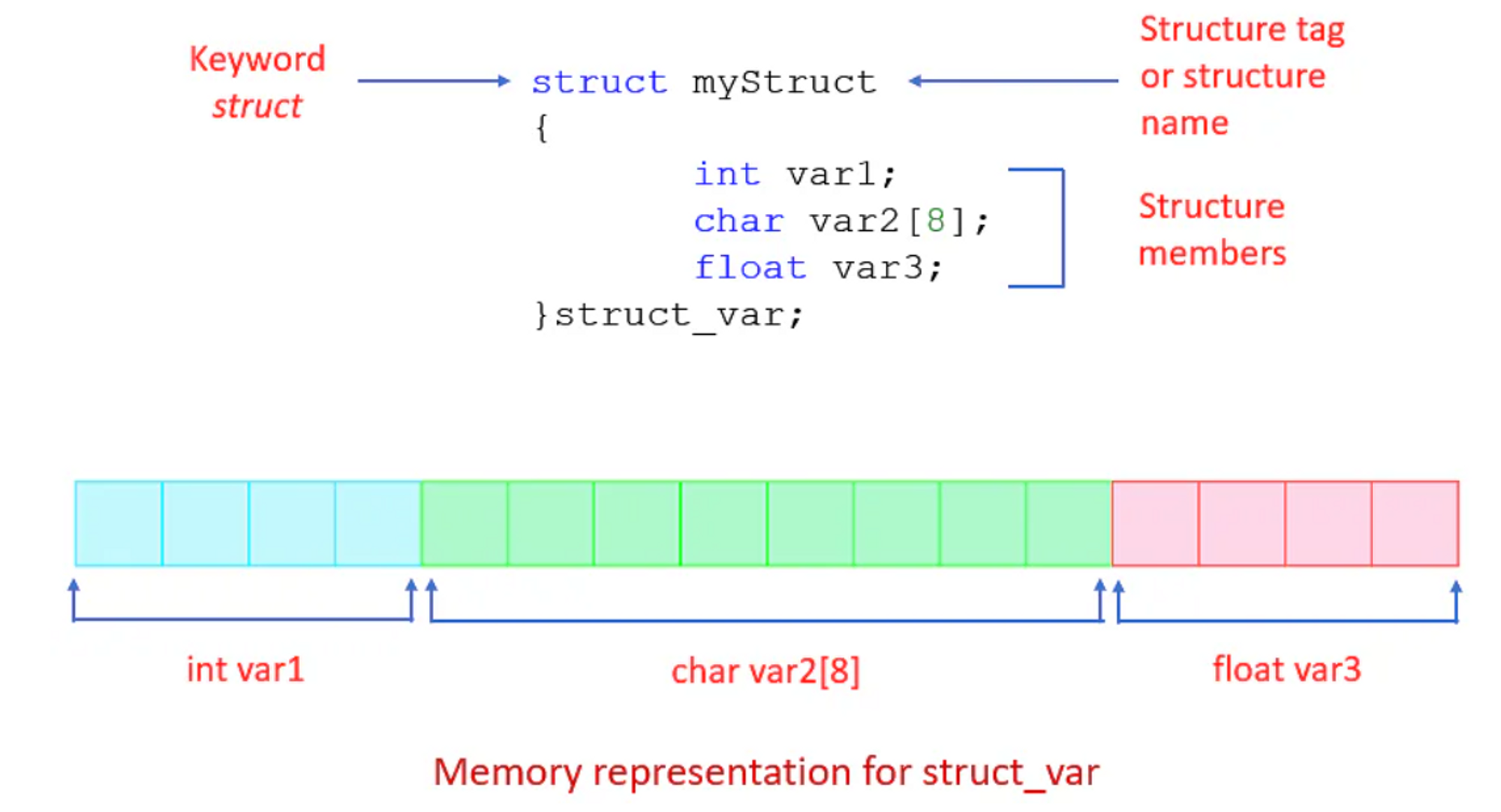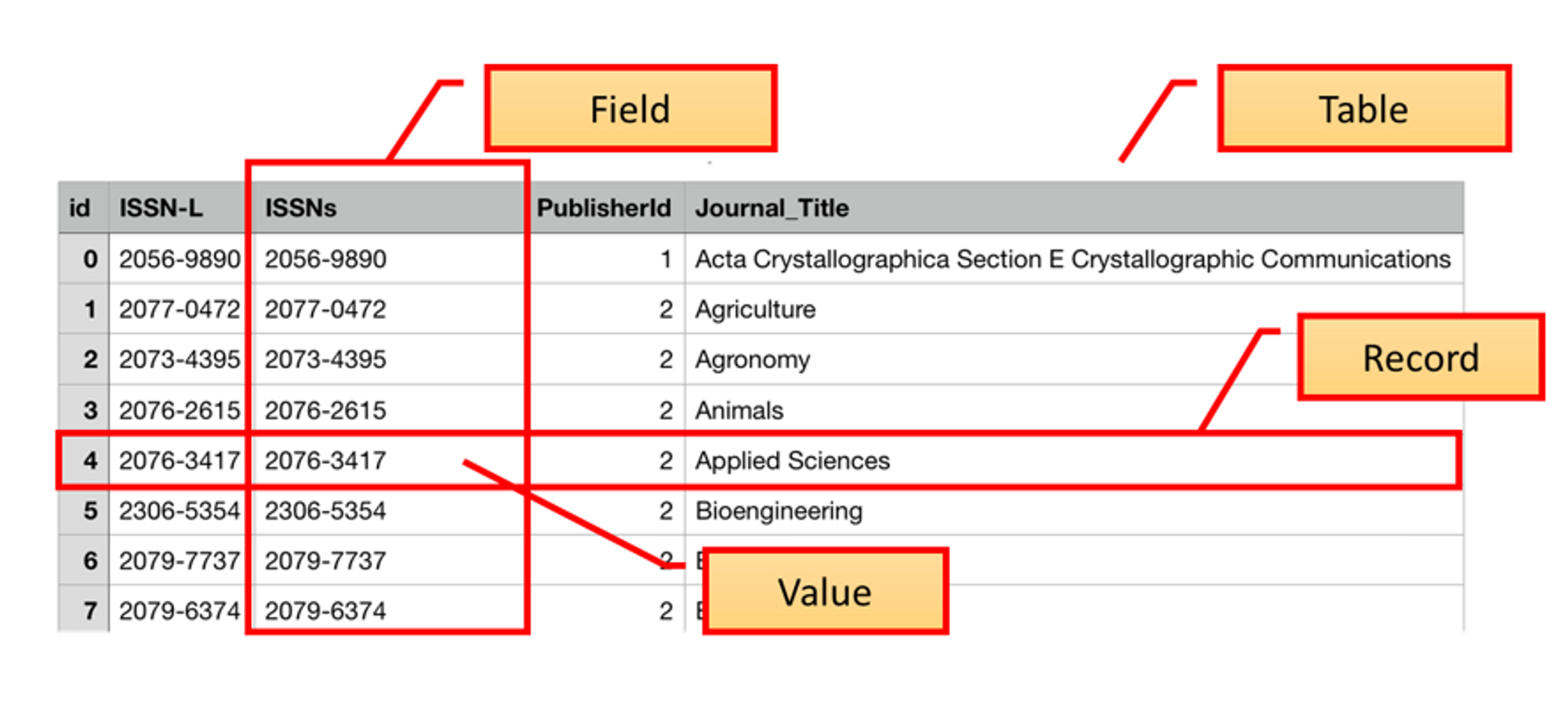Created: 2023-08-20 18:00
Status: #concept
Subject: Programming
Tags: C Object Data Structure TypeScript interface JavaScript Class
struct
A
struct is a data structure in C that contains named members that may have different types.
- the members inside the struct have their own Local Scope, so two different struct tags can have the same member names.

Syntax
It is similar to
type variableName with int, float, or double, but we use a struct Tag { ...members } instead.
- the sizeof a structure depends on the members, allocated 1 by 1 and with enough space for all.
- however, this size is not always accurate as the compiler may allocate more space to create a Computer Word (typically 8 Bytes).
- the
Tagis optional.
struct Tag { ...members } variableName;
// Part represents a part in a warehouse with an ID 'number', 'id', and stock 'on_hand'
// we declare 2 variables 'part1' & 'part2' with the type Part
struct Part {
int id;
char name[NAME_LEN+1];
int on_hand;
} part1, part2;
struct Part part3 = { 10, "Engine", 43 }; // using struct Tag to initialize
Initialization
struct Tag { ...members } variable = { ...memberValues };
struct {
int id;
char name[NAME_LEN+1];
int on_hand;
} part1 = {528, "Disk drive", 10},
part2 = {914, "Printer cable", 5},
part3 = {.on_hand = 2}; // we can also initialize specified members
// each value, separated by commas, will be stored in each member - in order
Member Access
We use the Dot Operator
., similar to other Object-oriented programming languages.
- the
.operator has the same precedence as()or->. - they are treated as Lvalues and can be assigned as Variables.
printf("Part id: %d", part1.id);
printf("Part name: %s", part1.name);
printf("Quantity on hand: %d", part1.on_hand);
part1.number = 258;
part1.on_hand++;
Copying Members & Assignment
Since we allocate a static amount of memory, we can assign them as if they were normal Variable C Data Types like
int.
- this only works for compatible types like structs with the same
Tag, it will not work if thestructwas declared separately.
struct {
int a[10];
} a1, a2;
struct {
int a[10];
} b;
a1 = a2; // valid
b = a1; // invalid, not compatible
By extension of that, we can also directly assign structs into Function parameters.
void print_part(struct part p) // function definition
{
printf("Part id: %d\n", p.id);
printf("Part name: %s\n", p.name);
printf("Quantity on hand: %d\n" p.on_hand);
}
print_part(part1); // function call
Custom Types with struct & typedef
Instead of using
struct Tag to declare a struct variable, we can alias the struct Tag with typedef.
typedef type Alias
typedef struct node {
int data;
struct node *next;
} Node;
Node head = { 3, NULL };
Nested struct Types
- we access them normally with another
.operator. parent.member.nestedMember
Array of struct Types
struct dialog_code {
char *country; // use a pointer to a string variable to not mutate
int code;
};
const struct dialing_code country_codes[] =
{
{"Argentina", 54}, {"Bangladesh", 880}, {"Brazil", 55}, {"China", 86},
{"Colombia", 57}, {"Egypt", 20}, {"Ethiopia", 251}, {"Indonesia", 62}
};
struct part inventory[100];
// declaration of array containing a max of 100 'part' structs
print_part(inventory[i]);
// prints the members' values using the function print_part
// on part 'i' in the array 'inventory'
inventory[i].number = 883;
// accessing a member inside part 'i' inside the structs array 'inventory'
inventory[i].name[0] = '\0';
// accessing a char array member inside part 'i'
We can think of
struct arrays as tables, where the struct.members are the columns while each struct tag arr[] element is a row.
